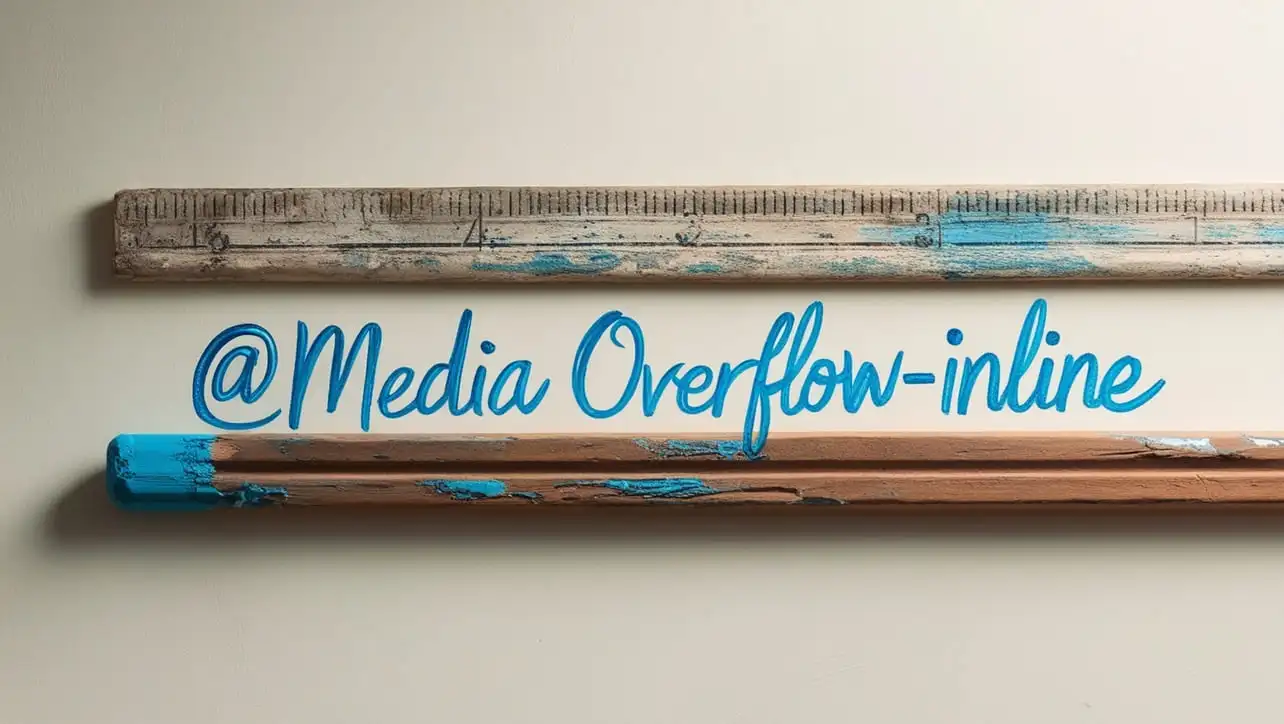
CSS @media overflow-inline Property

Photo Credit to CodeToFun
🙋 Introduction
The @media overflow-inline property in CSS is used within media queries to apply styles based on the inline overflow state of the viewport. It checks whether content overflows along the inline axis (typically horizontal for left-to-right languages) and adjusts styles accordingly. This allows web developers to create responsive designs that adapt based on the actual content overflow situation, improving user experience on various screen sizes.
💡 Syntax
The syntax for using the @media overflow-inline property within a media query is as follows:
@media (overflow-inline: auto | scroll) {
/* CSS rules go here */
}You can use the auto or scroll values to target different inline overflow states.
🏠 Property Values
- auto: This value indicates that the content may overflow, depending on the browser's calculation of the inline axis.
- scroll: This value is used when the content overflows the inline axis, forcing the user to scroll horizontally.
🎛️ Default Value
There is no default value for the @media overflow-inline property because it is a media feature used within a query, not a CSS property that is applied directly to elements.
📝 Example Usage
📜 Basic Usage
In this example, we will apply a background color to the body element when content overflows the inline axis, causing a horizontal scrollbar.
<!DOCTYPE html>
<html lang="en">
<head>
<meta charset="UTF-8">
<meta name="viewport" content="width=device-width, initial-scale=1.0">
<title>CSS @media overflow-inline Example</title>
<style>
body {
width: 100vw;
font-size: 24px;
}
@media (overflow-inline: scroll) {
body {
background-color: lightcoral;
}
}
</style>
</head>
<body>
<h1>CSS @media overflow-inline Property Example</h1>
<p>Resize the window or add more content to trigger an inline overflow and see the background color change.</p>
<p>Keep adding text or adjust window size to test the inline overflow behavior!</p>
</body>
</html>🖥️ Browser Compatibility
The @media overflow-inline property is supported in modern browsers, but it's essential to test across different browsers to ensure full compatibility for all users. Testing in responsive modes in developer tools can help verify how the property behaves on various screen sizes.
🎉 Conclusion
The @media overflow-inline property is a handy feature for responsive design, helping developers adapt styles based on content overflow along the inline axis. It enables better control over layout and styling when dealing with varying content lengths and screen widths. By using this media feature, you can create more flexible and dynamic web designs that provide a better user experience on all devices.
👨💻 Join our Community:
Author

For over eight years, I worked as a full-stack web developer. Now, I have chosen my profession as a full-time blogger at codetofun.com.
Buy me a coffee to make codetofun.com free for everyone.
Buy me a Coffee












If you have any doubts regarding this article (CSS @media overflow-inline Property), please comment here. I will help you immediately.